Japanese Beetle
- April 9, 2024
- 0 comment
The Japanese Beetle, scientifically known as Popillia japonica, is a notorious insect pest that originated in Japan but has spread to various parts of the world, including North America. These beetles are characterized by their vibrant metallic green bodies and copper-colored wings, making them easily recognizable. They are relatively small, measuring around half an inch in length. Japanese Beetles are notorious for their voracious feeding habits, targeting over 300 species of plants. They cause damage by skeletonizing leaves, consuming the tissue between veins, which can lead to severe defoliation and stress in plants. The life cycle of Japanese Beetles begins as eggs laid in soil, which hatch into larvae known as grubs.

These grubs feed on grassroots before pupating and emerging as adult beetles in early summer. The presence of Japanese Beetles can wreak havoc on gardens, landscapes, and agricultural crops, posing significant economic and environmental concerns. Understanding their behavior, identifying them accurately, and implementing effective control measures are essential for mitigating their impact and preserving plant health.
| Specification | Description |
|---|---|
| Scientific Name | Popillia japonica |
| Common Name | Japanese Beetle |
| Origin | Japan |
| Size | Approximately 0.5 inches (adult beetles) |
| Color | Metallic green body, copper-colored wings |
| Feeding Habit | Voracious feeder, targeting over 300 species of plants |
| Life Cycle | Egg, larva (grub), pupa, adult |
| Habitat | Thrives in warm, humid climates, common in North America and parts of Europe |
| Damage Caused | Skeletonizes leaves by consuming tissue between veins, leading to defoliation |
| Economic Impact | Significant damage to agricultural crops and ornamental plants |
| Environmental Impact | Disrupts ecosystems, reduces biodiversity, attracts predators and scavengers |
| Control Methods | Natural predators, biological control agents, chemical pesticides, cultural practices, physical barriers |
Japanese Beetle: Understanding, Controlling, and Preventing Infestations
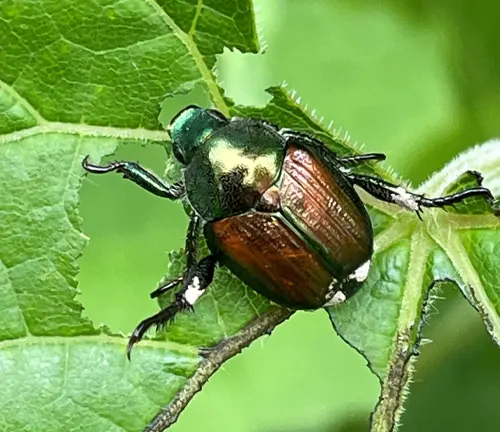
Japanese Beetle infestations can wreak havoc on gardens, landscapes, and agricultural crops. Understanding these pests, their behavior, and effective control methods is essential for mitigating their impact and preserving plant health.
Origin and Spread
Initially confined to a few northeastern states, Japanese Beetles have since spread across much of the United States and parts of Canada. They thrive in warm, humid climates and are particularly prevalent in regions with well-established turfgrass.
Identification
Physical Characteristics
The Japanese Beetle (Popillia japonica) is a small insect, typically measuring around half an inch in length. It is easily identifiable by its striking appearance, characterized by a metallic green body and shiny copper-colored wings. The iridescent green coloration of its body and the contrasting hues of its wings make it stand out against foliage. Additionally, Japanese Beetles have six legs and distinctive antennae that are often longer than their bodies. These features collectively contribute to their unique and easily recognizable appearance.

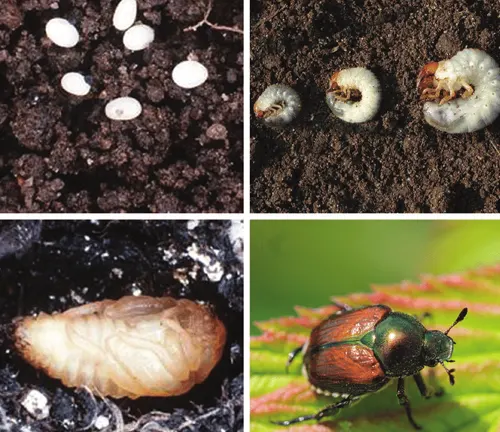
Life Cycle
The life cycle of the Japanese Beetle consists of four main stages: egg, larva (grub), pupa, and adult. The life cycle begins when adult female beetles lay eggs in moist soil, typically during the summer months. These eggs hatch into larvae, commonly referred to as grubs, which feed on grassroots and organic matter in the soil. As the grubs grow, they molt several times before entering the pupal stage. During this stage, the grub undergoes metamorphosis, eventually emerging as an adult beetle. Adult Japanese Beetles typically emerge in early summer and are most active during the warmest months of the year.
They feed on the foliage of various plants, mate, and lay eggs, completing the life cycle. The entire life cycle from egg to adult typically spans about one year, with variations depending on environmental conditions and geographic location.
Behavior
Feeding Habits
The Japanese Beetle is notorious for its voracious appetite and indiscriminate feeding habits. As adults, these beetles primarily feed on the foliage of a wide range of plants, making them a significant pest in gardens, landscapes, and agricultural settings. They are known to target over 300 species of plants, including ornamentals, fruit trees, vegetables, and various types of grasses.
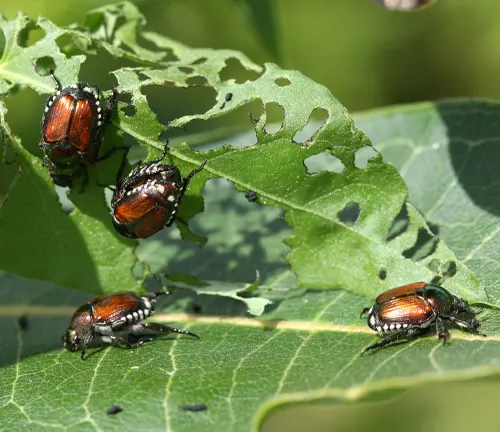

Damage Caused
Japanese Beetles can cause significant damage to plants through their feeding activities. By skeletonizing leaves, they weaken the structural integrity of plants and reduce their ability to photosynthesize effectively. Severe infestations can lead to defoliation, stunted growth, and even death of plants, particularly those with limited tolerance to beetle feeding.
The damage caused by Japanese Beetles extends beyond aesthetic concerns, impacting agricultural production and ecosystem health. In agricultural settings, crop damage can result in reduced yields and economic losses for farmers and growers. Additionally, the presence of Japanese Beetles can disrupt natural ecosystems by altering plant communities and food webs.
Control and Management
Natural Methods
Natural methods for controlling Japanese Beetles focus on utilizing biological agents and cultural practices to reduce beetle populations and minimize damage to plants. These methods are often preferred for their minimal environmental impact and reduced risk to non-target organisms. Some effective natural control options include:
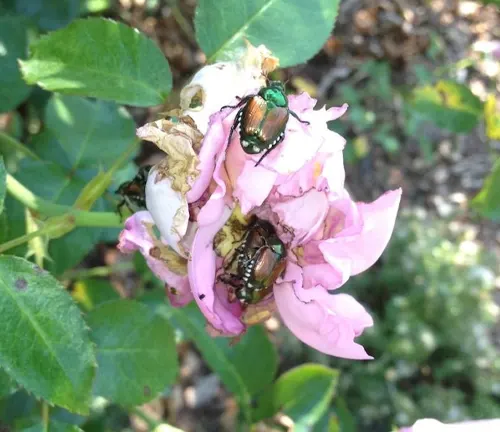

- Encouraging Natural Predators: Introducing or attracting natural predators of Japanese Beetles, such as birds, frogs, toads, and certain species of predatory insects, can help keep beetle populations in check. Providing habitat and food sources for these predators can help create a more balanced ecosystem and reduce the need for chemical controls.
- Biological Control Agents: Biological control agents, such as parasitic nematodes and certain species of parasitic wasps, can be used to target Japanese Beetle larvae in the soil. These beneficial organisms parasitize beetle larvae, reducing their numbers and preventing future infestations.
- Repellent Plants: Planting species that naturally repel Japanese Beetles, such as garlic, chives, marigolds, and catnip, can help deter beetles from feeding on susceptible plants. These repellent plants can be used as companion plants or interplanted with vulnerable crops to provide added protection.
- Barrier Methods: Physical barriers, such as floating row covers and netting, can be used to protect vulnerable plants from Japanese Beetle damage. These barriers prevent adult beetles from accessing plants while still allowing sunlight, water, and air to reach the crops.
Chemical Control
Chemical control options for managing Japanese Beetles involve the use of insecticides to kill adult beetles and/or larvae. While chemical controls can be effective in reducing beetle populations, they should be used judiciously and in accordance with label instructions to minimize environmental impact and avoid harm to non-target organisms. Some common chemical control options include:
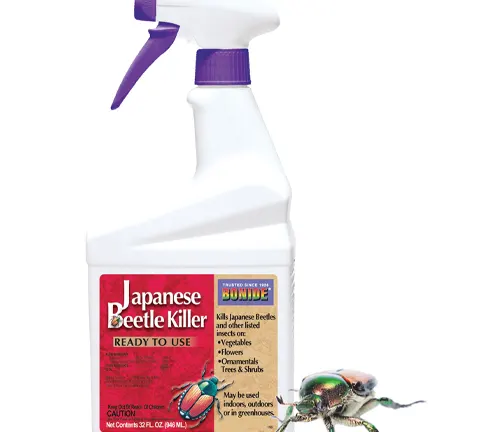
- Contact Insecticides: Contact insecticides, such as pyrethroids and carbamates, are applied directly to plants or soil to kill adult beetles upon contact. These insecticides provide rapid knockdown of beetles but may require repeated applications to maintain control.
- Systemic Insecticides: Systemic insecticides are absorbed by plants and translocated throughout the vascular system, making them toxic to feeding insects like Japanese Beetles. These insecticides are applied to the soil or foliage and provide long-lasting protection against beetle damage.
- Baited Traps: Baited traps can be used to attract and capture adult Japanese Beetles. These traps typically contain a lure or pheromone that attracts beetles, leading them into a trap where they are captured or killed. While baited traps can help reduce beetle populations, they may also attract more beetles to the area if not used properly.
- Residual Insecticides: Residual insecticides, such as neonicotinoids and organophosphates, can be applied to soil or foliage to create a barrier that kills beetles upon contact or ingestion. These insecticides provide longer-lasting control and can be effective in reducing beetle populations in large-scale agricultural settings.
Prevention Tips
Cultural Practices
Cultural practices for controlling Japanese Beetles involve implementing strategies that create unfavorable conditions for beetle infestations and promote plant health. These practices focus on maintaining healthy plants and reducing the attractiveness of landscapes to beetles. Some effective cultural practices include:
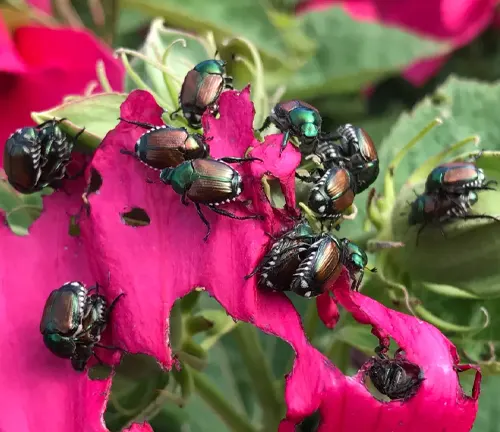
- Proper Plant Selection: Choosing plant species that are less attractive to Japanese Beetles can help reduce the risk of infestation. Selecting plants with tough, leathery foliage or strong fragrances that deter beetles can help minimize damage.
- Diverse Plantings: Planting a diverse range of species in gardens and landscapes can help reduce the impact of Japanese Beetle infestations. By diversifying plantings, gardeners can reduce the likelihood of widespread damage if beetles target a particular plant species.
- Crop Rotation: Rotating crops in agricultural settings can help disrupt the life cycle of Japanese Beetles and reduce their numbers over time. By alternating plantings and avoiding monocultures, farmers can minimize beetle populations and reduce the need for chemical controls.
- Soil Management: Maintaining healthy soil through proper fertilization, pH adjustment, and organic matter additions can help improve plant vigor and resilience to Japanese Beetle damage. Healthy plants are better able to withstand beetle feeding and recover from infestations.
Mechanical Controls
Mechanical controls for managing Japanese Beetles involve physical methods of trapping, removing, or excluding beetles from plants and landscapes. These controls are often labor-intensive but can be effective in reducing beetle populations without the use of chemicals. Some common mechanical control options include:
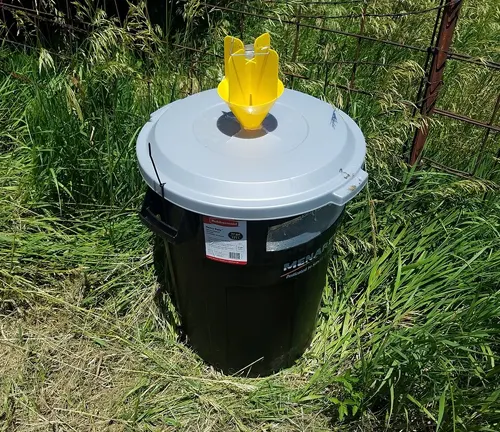
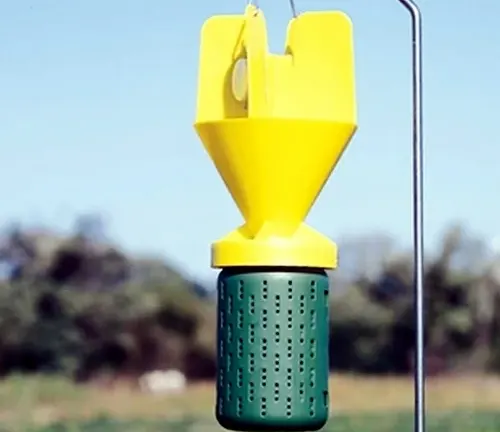
- Hand Picking: Hand-picking adult Japanese Beetles from plants and dropping them into a container of soapy water can be an effective method for small-scale control. This method helps reduce beetle populations and prevents further damage to plants.
- Vacuuming: Using a handheld vacuum or specialized beetle vacuum to remove adult beetles from plants can help reduce beetle populations and minimize damage. This method is particularly useful for large infestations or hard-to-reach areas.
- Traps: Sticky traps or pheromone traps can be used to attract and capture adult Japanese Beetles. These traps can help reduce beetle populations in localized areas and provide early detection of infestations.
- Row Covers: Floating row covers or netting can be used to physically exclude Japanese Beetles from vulnerable plants. These covers create a barrier that prevents beetles from accessing plants while still allowing sunlight, water, and air to reach the crops.
Japanese Beetle vs. Similar Pests
Japanese Beetles (Popillia japonica) share similarities with several other beetle species, including the European Chafer (Rhizotrogus majalis), Oriental Beetle (Anomala orientalis), Asiatic Garden Beetle (Maladera castanea), and Green June Beetle (Cotinis nitida). While these beetles may vary in appearance and behavior, they all pose similar threats to plants and landscapes. Distinguishing Japanese Beetles from similar pests is essential for implementing appropriate control measures and managing infestations effectively.
Impact on Agriculture
Japanese Beetles pose a significant threat to agricultural crops, including fruits, vegetables, ornamentals, and turfgrass. Their voracious feeding habits can defoliate plants, reduce crop yields, and compromise plant health, leading to economic losses for farmers and growers. Additionally, Japanese Beetle larvae (grubs) feed on grassroots, causing damage to turfgrass and disrupting lawn aesthetics.
Impact on Environment
Beyond agricultural settings, Japanese Beetle infestations can have adverse effects on natural ecosystems and biodiversity. Their indiscriminate feeding habits can disrupt plant communities, reduce habitat quality for native species, and alter ecosystem dynamics. Additionally, Japanese Beetles may compete with native insect species for resources and contribute to declines in native plant populations.
Japanese Beetle in Urban Settings
Japanese Beetles are commonly found in urban and suburban landscapes, where they feed on ornamental plants, fruit trees, and garden vegetables. Their presence in urban settings can be a nuisance for homeowners and gardeners, leading to aesthetic damage and reduced property values. Effective management strategies, including cultural practices and mechanical controls, are necessary to minimize beetle populations and preserve landscape aesthetics.
Economic Impact
The economic impact of Japanese Beetle infestations extends beyond direct crop damage, encompassing costs associated with pest management, loss of ecosystem services, and reduced property values. In agricultural settings, Japanese Beetle damage can result in significant financial losses for farmers and growers, affecting food production and supply chains. Additionally, the presence of Japanese Beetles in urban areas can lead to increased spending on pest control measures and landscape maintenance.
Future Concerns and Research
As Japanese Beetle populations continue to expand and adapt to new environments, ongoing research into sustainable control methods and genetic management strategies is crucial for mitigating their impact. Researchers are exploring innovative approaches, such as biological control agents, mating disruption techniques, and genetic modification of beetle populations, to reduce beetle numbers and minimize damage to plants and landscapes. Additionally, monitoring and surveillance programs are essential for tracking beetle populations and identifying emerging threats to agriculture and the environment.
Different Species
Japanese Beetle
(Popillia japonica)
The most well-known species, native to Japan but introduced to North America and other parts of the world. Recognizable by its metallic green body and copper-colored wings.
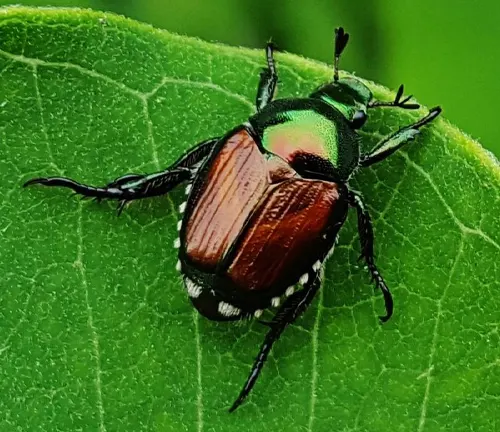

European Chafer
(Rhizotrogus majalis)
Often confused with Japanese Beetles, European Chafers are native to Europe but have been introduced to North America. They have a similar appearance but tend to be slightly larger and have a more reddish-brown coloration.
Oriental Beetle
(Anomala orientalis)
Another species native to Asia, Oriental Beetles are similar in appearance to Japanese Beetles but have subtle differences in their markings and habits. They are found in various parts of Asia and have been introduced to North America.
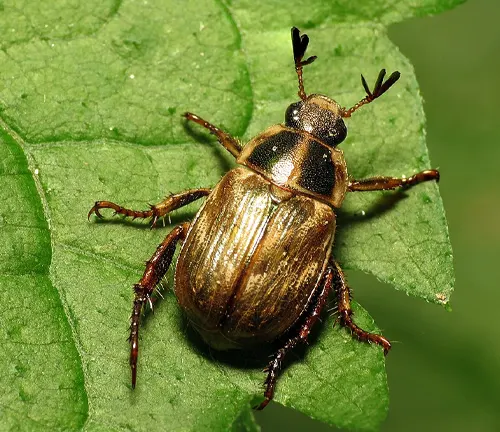
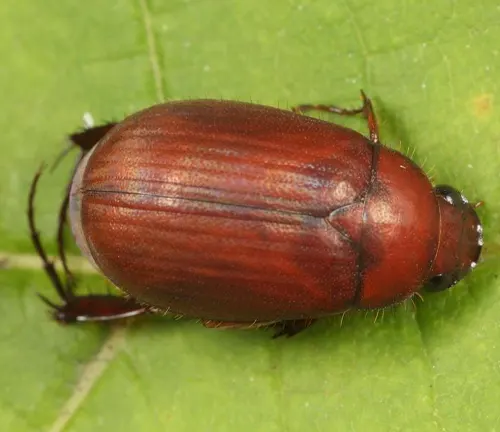
Asiatic Garden Beetle
(Maladera castanea)
Native to Asia, these beetles are closely related to Japanese Beetles and often share similar habitats and feeding habits. They are smaller and darker in color compared to Japanese Beetles.
Green June Beetle
(Cotinis nitida)
While not specifically a “Japanese Beetle,” Green June Beetles are often encountered in similar habitats and can be mistaken for Japanese Beetles. They are larger and have a metallic green coloration, but their feeding habits and impact on plants are comparable.

Frequently Asked Question
- Do Japanese beetles have any natural enemies or predators?
Yes, Japanese Beetles have several natural enemies, including birds, frogs, toads, parasitic wasps, predatory beetles, and certain species of nematodes. These predators help keep Japanese Beetle populations in check in natural ecosystems. - What are some signs of Japanese beetle infestation in my garden?
Signs of Japanese Beetle infestation include skeletonized leaves, irregular holes in leaves and flowers, damaged fruit or foliage, and the presence of adult beetles on plants. Brown patches in lawns caused by feeding grubs may also indicate infestation. - How can I control Japanese beetles without using chemical pesticides?
Non-chemical control methods for Japanese Beetles include hand-picking adults, applying floating row covers to protect plants, using beetle traps with pheromone attractants, introducing natural predators, such as parasitic nematodes, and employing cultural practices like crop rotation and intercropping. - Are there any plants that Japanese beetles avoid?
While Japanese Beetles feed on a wide range of plants, there are some species they tend to avoid. Plants with strong fragrances or textures that are unappealing to beetles, such as garlic, chives, marigolds, and catnip, may be less susceptible to damage. - Can Japanese beetles cause damage to trees?
Yes, Japanese Beetles can cause significant damage to trees by defoliating their leaves. Severe infestations can weaken trees, stunt their growth, and make them more susceptible to other pests and diseases. Young trees are particularly vulnerable to damage. - Are Japanese beetles attracted to certain colors or types of plants?
Japanese Beetles are attracted to plants with soft, tender foliage and sweet, fragrant flowers. They are particularly fond of roses, grapes, raspberries, linden trees, and certain species of fruit trees. They are also attracted to colors such as white, yellow, and pink. - How long do Japanese beetles live once they emerge as adults?
Adult Japanese Beetles typically live for 4 to 6 weeks, during which time they feed, mate, and lay eggs in the soil. Their lifespan may vary depending on environmental conditions and availability of food sources. - Can Japanese beetles be controlled with organic methods?
Yes, organic control methods for Japanese Beetles include introducing natural predators, using insecticidal soaps and neem oil, applying diatomaceous earth, using kaolin clay as a deterrent, and employing physical barriers like floating row covers and netting. - Do Japanese beetles feed on grass, and if so, how can I protect my lawn?
Yes, Japanese Beetles feed on grass roots in their larval stage, causing brown patches and thinning turf. To protect your lawn, apply beneficial nematodes or milky spore powder to the soil to target beetle larvae. Additionally, maintaining proper lawn care practices such as regular watering, mowing, and aeration can help strengthen grass and reduce beetle damage.


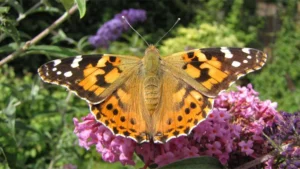
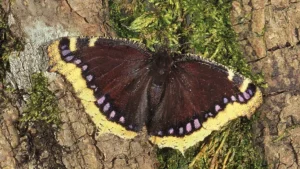


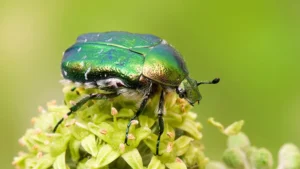

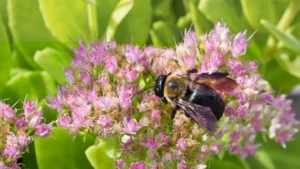
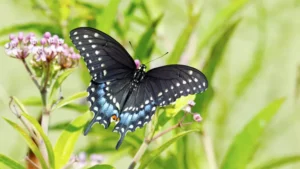

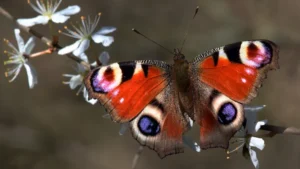
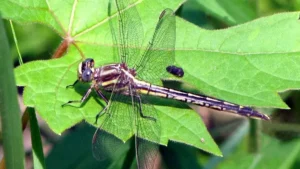
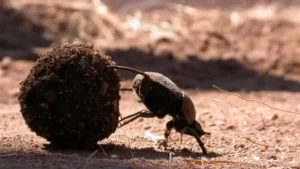
Leave your comment